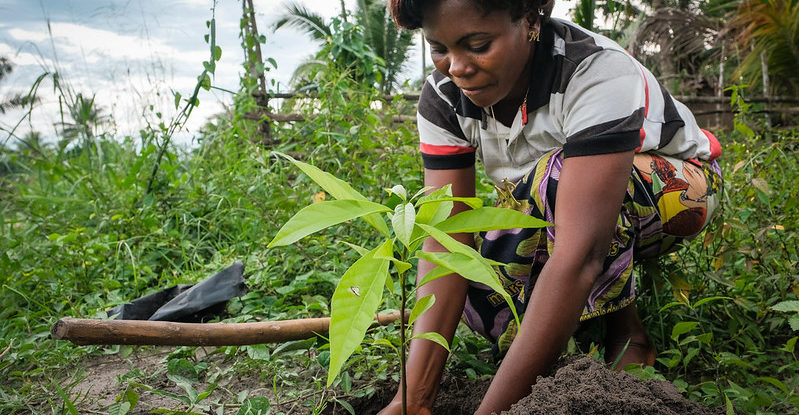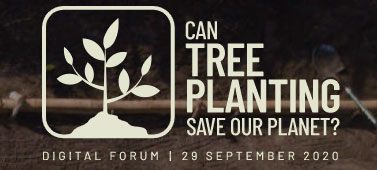
“Plant more trees!” has become a rallying cry for global leaders and climate activists around the world who see tree planting as a solution for everything from climate change to food security.
The growing interest in this area means it is more important now than ever before to consider effective tree planting that benefits communities and the environment.
To do this, the right tree must be planted in the right place for the right purpose.
But there are many misconceptions that need to be addressed before the “right” conditions for successful tree planting are met.
“Breaking down the misconceptions about tree planting ensures we do not invest in actions that cause further damage to people and the planet, only to realize these problems after the damage is already done,” says Susan Chomba, a World Agroforestry (ICRAF) scientist, who will speak at the upcoming Global Landscapes Forum (GLF) Tree Planting digital forum on September 29.
She will be joined by Manuel Guariguata, principal scientist at the Center for International Forestry Research (CIFOR); Ramni Jamnadass, co-leader of the Tree Productivity and Diversity unit at ICRAF; and Cora van Oosten, a senior project leader on landscapes, restoration, governance at Wageningen University.
Ahead of the event, the scientists address seven key misconceptions about tree planting and highlight more productive ways of managing these initiatives.
Misconception 1: Any seed is a good seed. Seed quality and sourcing is essential for tree planting success. Tree species are composed of many populations that can be wildly divergent with respect to their preference for the “right place.” Also, some seed sources may have a very narrow range of genetic diversity. One example is Grevillea robusta in East Africa. This tree was originally introduced from Australia, and today millions of these trees are now growing on small farms from Kenya to Rwanda. The entire population of trees all have a small handful of common ancestors and grow perhaps half as fast as they could do had they been from a good seed source with more genetic diversity.
Misconception 2: Once the trees are planted, the job is done. It is important to move beyond tree planting to tree growing. Tree growing means looking at trees as an investment requiring management, protection and realized returns on that investment. A focus on growing trees for the long-term can be particularly beneficial to smallholder farmers who stand to gain the most from realized returns in the form of marketable tree products and ecosystem services. Without this long-term focus, projects risk very low survival rates for seedlings, and wasted resources in the long term.
Misconception 3: All trees are easy to grow. A fundamental misconception is that any tree species can be planted anywhere and will grow easily. Although some smallholder farmers plant native food trees in agroforestry systems to help conserve them and ensure food security, this is not always an effective approach. Many native species are still wild or only partially domesticated, which means they are also under-researched and that optimum methodologies for farming them have not been developed yet. This can lead to major challenges with germination, propagation and management.
Misconception 4: Planting any tree anywhere is better than not planting a tree at all. Ecological niches such as grasslands exist, and these should not be replaced with trees. A diversity of Indigenous trees is also far more likely to restore and support biodiversity than monoculture plantations or plantations with a few species. There are also several niches on farms where farmers can cultivate trees for different uses, including soil fertility enhancement (through nitrogen fixing trees), food and nutritional benefits (e.g. fruit trees) and timber and energy, among other things.
Misconception 5: Tree planting is a top-down process. A common misconception is that successful tree planting initiatives should treat community members like employees who take orders from the top. Many people think that once funding from a big donor is secured, the planting project can simply pay farmers to collect seed, pay them to establish project nurseries and pay them to plant seedlings. That approach disregards the need for small-scale tree planters to have ownership and agency over planting that happens on their land. A sustainable process would ensure that knowledge is the basis for participation. Through capacity development community members can learn more about what a quality tree is; they should know how to source good seeds and seedlings; they should be informed about how they can improve their livelihoods through the trees they’re helping to plant.
Misconception 6: Tree planting is the only way to restore degraded land. The truth is that tree planting is just one of the tools in a well-stocked toolbox of practices. In fact, there are contexts where massive tree planting is a less favorable restoration technique, such as in arid and semi-arid areas where natural regeneration techniques can sometimes offer more effective and cost-efficient options. In arid and semi-arid areas, adding soil, water and livestock management practices increases the chances of success for both tree planting and natural regeneration.
Misconception 7: Climate change, biodiversity loss and food security can be addressed just by planting trees. These are complex challenges that require looking at both the causes (e.g. what is increasing Greenhouse Gas (GHG) emissions) and the context-specific solutions for each. Natural regeneration, as well as efficient farming and livestock management should also be considered as methods of addressing environmental objectives. Supporting community-led initiatives, valuing their products and services, and appreciating their efforts through institutional, technical and financial support is more effective than a single-purpose tree plantation.
We want you to share Forests News content, which is licensed under Creative Commons Attribution-NonCommercial-ShareAlike 4.0 International (CC BY-NC-SA 4.0). This means you are free to redistribute our material for non-commercial purposes. All we ask is that you give Forests News appropriate credit and link to the original Forests News content, indicate if changes were made, and distribute your contributions under the same Creative Commons license. You must notify Forests News if you repost, reprint or reuse our materials by contacting forestsnews@cifor-icraf.org.
